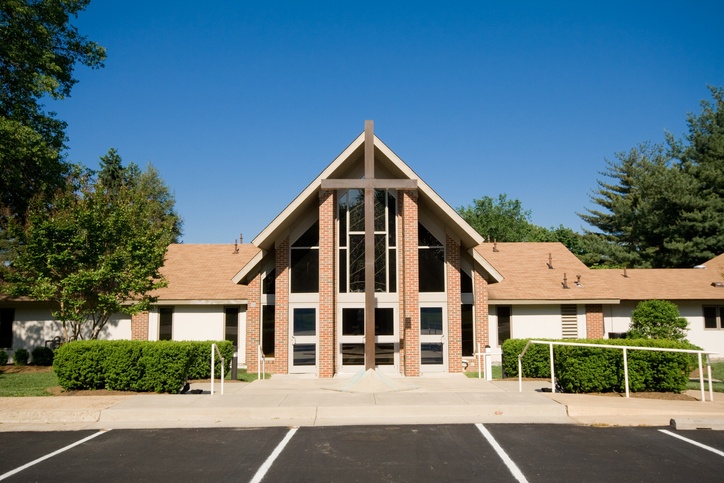
 Many things have changed in ministry over the last 2 years, leading to some new and exciting opportunities.
Many things have changed in ministry over the last 2 years, leading to some new and exciting opportunities.
Construction activity slowed during the pandemic and now appears to be on the rebound. Lending requests for new projects, renovation and expansion have increased and churches are primarily investing in three different types of venues:

Senior Relationship Manager
Thrivent Church Financing
#1: Retrofitting existing church facilities as part of church acquisitions or mergers
During COVID, and to this day, churches facing challenges sometimes are approaching larger and more stable ministries with deeper resources for leadership and guidance. Some ministries that were challenged weren’t necessarily in a position to take the steps to grow or found it difficult to adapt to their new normal.
It has become more common for larger churches to adopt the smaller ministries into their family — including the real estate and retrofitting the facilities to help meet ministry needs.
#2: Satellite expansion, smaller venues
Satellite-campus expansion has been a part of the church operating model for many years. Smaller venues have become popular as more people have expressed interest in small groups than in mega venues with thousands gathering on a Sunday.
Smaller venues that are active in their local communities have been a more popular expansion strategy to achieve growth. Limiting the size of these facilities can allow leadership to reach communities more effectively and provides more flexibility with budget.

Senior Relationship Manager
Thrivent Church Financing
#3: Buying and retrofitting non-traditional facilities for church use
If a church seeks to expand in another city, it may not do so by making the home church bigger. Rather, finding a vacant or underutilized commercial space and making it work for church use could be a more economical approach, particularly from a cost-per-square-foot standpoint. In fact, repurposing an existing space can literally cost half as much as building from the ground up.
As an example, we recently funded the repurposing of a 40,000-square-foot furniture store. Though unconventional, it was cost-effective and well situated to accommodate the needs of a growing congregation and provide room for continued growth.
But before you build, renovate or reimagine …
Whatever expansion approach your church chooses, there are some factors to consider:
Do you actually need all that space? Carefully consider purchasing more square footage than is feasible or necessary. If your church needs 10,000 square feet and you’re purchasing 100,000 square feet, it will drive up maintenance costs. Does your ministry have the financial strength to take on this additional obligation? And while the vacant strip mall with the potential for lease income may seem attractive, churches generally aren’t skilled landlords or property managers.

If the space needs renovating, you will also want to make sure to have finances lined up for the project. A Guaranteed Maximum Price (GMP) contract with your contractor for any anticipated work can help mitigate construction risk so the church protects itself against any unanticipated changes to project costs.
Is the building you’re interested in purchasing attached to other buildings? If so, shared maintenance costs and the strength of the association will be important factors to consider. Is the roof shared with other spaces? Is your church responsible for the HVAC and plumbing? If you meet in a mall, for instance, what if mall management or other tenants go out of business? If the expenses are shared, could the church end up with a disproportionate cost?
Even if a church itself is healthy, the success or failure of a third party can impact the church and everything attached to the church.
Zoning and parking considerations. Whether or not there’s enough parking is a top concern. Will the church own sufficient parking to meet municipal zoning requirements? Is the property to be acquired zoned for assembly?
For example, if your church is considering purchasing office space, it’s unlikely that there will be enough parking for church use. The other important consideration is what improvements will be required for the property to meet all ADA requirements for assembly use.
Above all: don’t build until your loan is in place!
Do not start construction until sources and uses of funding are in balance and the lender’s mortgage is recorded.
If construction begins before the loan is in place, the title company will not be able to provide the lender with its required title coverage for a first lien ahead of any potential mechanics liens. Additionally, the church should not sign and start a contract it cannot fulfill without having its loan in place. Unless your church has sufficient funds to pay for the entire project in cash, it is important the church consult with its lender regarding the construction timeline so all loan requirements are met prior to commencing construction.
Some things never change
Real estate investment does not necessarily equate to a successful ministry. The physical building is certainly important for growing ministries; however, expansion must be carefully planned so the ministry does not find itself over-burdened with real estate and expenses.
While churches have found new ways to expand, it is important to plan carefully and consult with necessary experts so the church does not take on any undue risk that could impact their ability to serve their communities.
While we don’t know what the future holds, one thing remains true: the Church body is resilient. And while real estate is certainly a key component of ministry, influencing lives for Christ is at the heart of what we aim to do.


